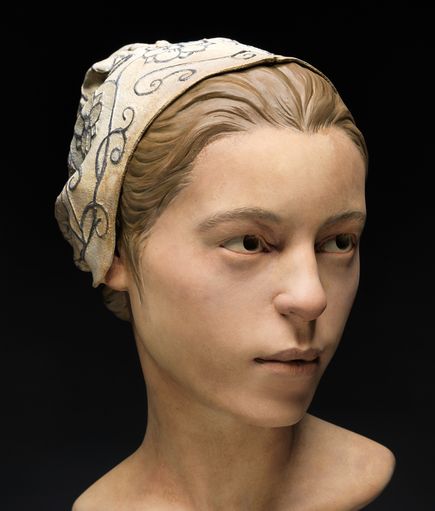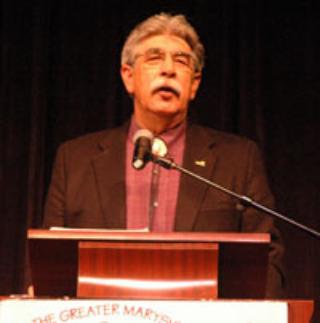Gale Courey Toensing, Indian Country Today Media Network
In late February, the California Department of Corrections and Rehabilitation issued a provisional emergency regulation denying indigenous prisoners access to items used in religious ceremony – sacred medicines like kinnikinnick, copal, and osha root; sacred pipes and pipe bags; drums and other instruments; water dippers; cloth for prayer ties; beads and beading supplies; animal hides and other objects.
The draconian restrictions have given rise to a backlash of protest and now a tribal organization is spearheading an effort both within the United States and in the international arena to stop California and other states from depriving American Indian and Alaska Native prisoners of their right to practice their traditional indigenous religions.
Huy (pronounced “hoyt”), a tribally-owned non-profit corporation in Washington state, has issued a call to action for tribes, tribal organizations, and individuals to submit written comments in opposition to the California Department of Corrections and Rehabilitation’s (CDCR) proposal to codify the emergency religious property regulation into law. Comments may be sent to CDCR, Regulation and Policy Management Branch, P.O., Box 942883, Sacramento, CA 94283-0001 or by fax to (916) 324-6075, or e-mail to RPMB@cdcr.ca.gov. (Related story: Huy: Washington State Non-Profit to Improve Indian Prisoner Ceremonies)
Time is of the essence, Huy Chairman Gabriel S. Galanda said. All written comments must be received by the close of the public comment period May 7, 2013, at 5:00 p.m. Also, a public hearing will be held on May 7, from 10:00 a.m. to 11:00 a.m. in Sacramento, specifically in the Kern room, located at 151 S Street, North Building, 95811. “The CDCR will then consider comments, evaluate proposed alternatives, and issue a final rule. We urge your timely written and public comment in opposition to the State of California’s unlawful effort to unduly restrict American indigenous prisoners’ freedom to believe, express and exercise traditional indigenous religion,” Galanda said. Galanda is a member of the Round Valley Indian Tribes, a lawyer with Galanda Broadman in Seattle, and director of the National Native Bar Association.
Huy explains the new CDCR restrictions in a blog posting on Galanda Broadman’s website. A prison order from Soledad Prison in California from May 9, 2011 shows the variety of items inmates were allowed to possess under the “Authorized Personal Property Schedule” back then. The items included but were not limited to sacred herbs, including sage, sweet grass, cedar, kinnikinnick, copal, bitter root and osha root; prayer fans; beaded items such as wristbands, headbands, bandannas; cloth to be used for prayer ties, beads and beading supplies including needles, looms, and thread; pipes and pipe bags; hand drums, flutes, rattles, and clap stick; gourd water dippers; soft leather from a variety of animals; and coyote and bear teeth.
By contrast, the new emergency regulations includes a “Religious Property Matrix” that prohibits kinnikinnick, copal, and osha root, cloth for prayer ties, beads or beading supplies, pipes or pipe bags, drums or other instruments, water dippers, leather, teeth, or other items. “The new Matrix should not affect the use of tobacco in ceremonies. Prisoners were not previously allowed to possess tobacco personally, though they were allowed to use it for religious purposes. … Thankfully, the regulations regarding tobacco have not been amended,” Huy’s blog entry says.
Equally as drastic as these prohibitions is the CDCR’s curtailment of indigenous prisoners’ sweat lodge ceremonies – a restriction that presents a potentially disastrous impediment to indigenous prisoners’ spiritual rehabilitation, said Kristen Eriksen, a criminal defense lawyer with a former client in Soledad with whom she has kept in touch. In addition to speaking with him on the phone, Eriksen has sent her former client “spiritual packages” of items used in ceremony several times a year for around three years. She asked that his name be withheld.
Eriksen said she doesn’t know why the CDCR imposed the new restrictions. “I haven’t looked into the limitations on other groups but from what my client has said they don’t have those same limitations,” she said. Reporting on a recent conversation with her former client, she said, “The Native Americans used to have every weekend for sweat lodge and there are 70 of them and there are two yards so they’d have eight sweat lodges a month – now they’re down to one, sometimes two a month. They’re really being ignored and really to their detriment. The sweat lodge is very rehabilitative for them and it’s been something that’s really bound them together and helped them to develop their own spirituality, their connection to their culture, to each other, to themselves – everything, you know? – and I just can’t believe that anything positive can come from limiting that,” Eriksen said. “And it’s not as if there’s been any kind of problem. There’s been nothing,” she added.
Eriksen’s former client has filed a complaint seeking administrative review of the new restrictions “because it’s really quite severe in terms of taking away so many privileges and so many items that they previously had,” Eriksen said. “He’s in contact with the Imam of the Muslims who agreed to talk to the board with him, but the Imam said none of the other spiritual advisors would assist,” she said.
In addition to her legal work, Eriksen is in charge of her school district’s Native American Parents Advisory Committee. “We have these ceremonies a couple times a year and [my former client] has been really cool about making jewelry and medallions and things that we’ve been able to utilize to give to kids in our school. It’s been really nice. He’s gotten a lot of joy from beading and it’s been really good for him to be able to be creative and he’s improved a ton and it’s been beneficial to us too. Now they’re no longer allowed to bead,” Eriksen said. “It’s so wrong. There’s no reason for it and I truly believe it’s partly because they don’t have an advocate.”
Although Huy, which means “See you again/we never say goodbye” in the coastal Salish language, is focused on the CDCR’s immediate lawmaking effort, the organization has reached far to draw attention to abuses of indigenous prisoners’ religious rights across the country.
On April 19 Huy wrote to U.N. Special Rapporteur on the Rights of Indigenous Peoples seeking “an investigation into the pervasive pattern in the United States of increasing restrictions on the religious freedoms of Indigenous Peoples who have been deprived of their liberty, particularly by American state corrections agencies and officers.” The letter notes that Peoples in the U.S., have the highest incarceration rate of any racial or ethnic group – 38-percent the national rate.
The letter charges the U.S. with “failing to fulfill its duty to protect the religious freedoms of American indigenous prisoners” in violation of both domestic and international law, citing the U.N Declaration on the Rights of Indigenous Peoples, International Covenant on Civil and Political Rights, and the U.S. Constitution’s First Amendment. Although the letter to Anaya did not mention the Universal Declaration of Human Rights and its protection of religious freedom, Galanda told Indian Country Today Media Network that the restrictions on indigenous religious practice clearly violate international human rights law. “The pervasive pattern of state violations of American indigenous religious liberty that we are seeing not only impinges upon international indigenous rights and American constitutional and civil rights but also universal human rights,” Galanda said.
Huy has also gained the support of NNABA, which passed resolution that Galanda proposed at its annual meeting April 10 in support of religious freedom for incarcerated American Indians, Alaska Natives and Native Hawaiians. On April 24 the NNABA wrote to the American Association of State Correctional Administrators, the American Correctional Association, the American Bar Association, the Federal Bar Association, the American Association of State Correctional Administrators, the Department of Justice Civil Rights Division, and the National Congress of American Indians asking for their official support for American indigenous prisoners’ freedom to believe, express and exercise traditional indigenous religion; to condemn any unduly burdensome or patently illegal federal or state restrictions on the Indigenous Peoples’ religious liberty; and to help explore how federal, state and American indigenous governments can jointly develop and advance shared goals concerning American indigenous prisoners.
Read more at http://indiancountrytodaymedianetwork.com/2013/04/30/huy-urges-urgent-action-indigenous-prisoners-religious-freedom-149097













